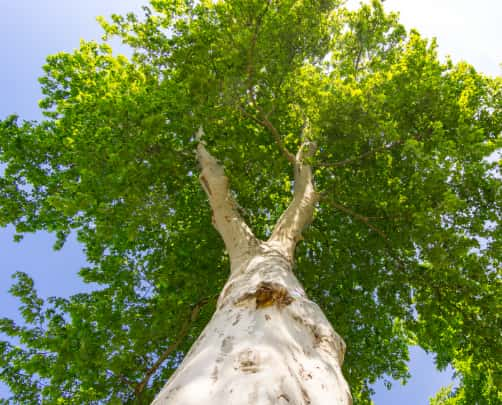Trees are an essential part of our landscapes, providing aesthetic value, shade, and environmental benefits. However, for trees to remain healthy and visually appealing, proper care and maintenance are required. One crucial aspect of tree care is crown management. In this article, we will explore the concept of tree crown management, its importance, and how it can help balance a tree’s growth and appearance.
What is Tree Crown Management?
The “crown” of a tree refers to the upper part, consisting of the branches, leaves, and buds. Crown management is the practice of selectively pruning or thinning the crown to maintain the tree’s shape, health, and overall appearance. It involves the careful removal of branches to control growth, reduce the size of the crown, and improve the structure of the tree.
Tree crown management can include a variety of techniques, such as crown thinning, crown reduction, and crown raising. These techniques are used for different purposes, depending on the specific needs of the tree and the environment in which it grows.
Why is Tree Crown Management Important?
Effective crown management is essential for several reasons, including:
- Promoting Healthy Growth: Regular crown management ensures that a tree’s energy is distributed evenly, allowing it to grow stronger and healthier. By removing dead or diseased branches, the tree can focus on growing new, healthy foliage.
- Enhancing Aesthetic Appeal: A well-maintained tree with an aesthetically pleasing shape can greatly enhance the overall appearance of your garden or landscape. Proper crown management ensures that the tree remains in proportion and attractive, without becoming too large or unruly.
- Improving Structural Integrity: Pruning the crown can help eliminate weak or crossing branches, which may lead to structural issues or breakage. This also reduces the risk of branches snapping during storms or strong winds.
- Increasing Sunlight and Airflow: Thinning the crown can improve sunlight penetration and air circulation, which benefits both the tree and the plants growing beneath it. Better airflow can also help reduce the risk of fungal diseases.
- Preventing Damage to Property: Trees that are too close to buildings, roads, or power lines may cause damage or obstruct access. Crown management allows for safe growth control, keeping branches away from structures and utilities.
Techniques for Effective Tree Crown Management
There are several techniques that tree surgeons use to manage the crown of a tree. These techniques are designed to balance growth and appearance, ensuring that the tree remains healthy and safe.
1. Crown Thinning
Crown thinning involves selectively removing branches from the tree’s canopy to reduce density. This technique improves light penetration, allows better airflow, and reduces the risk of disease. Crown thinning is particularly useful for mature trees that have a dense canopy and may be blocking light for other plants.
- Why It’s Important: Thinning the crown helps to balance the tree’s energy distribution, allowing the remaining branches to grow more vigorously. It also reduces the weight of the crown, which can help prevent branch breakage during storms.
2. Crown Reduction
Crown reduction is the process of reducing the overall size of the tree’s canopy by cutting back the branches. This technique is often used when a tree has outgrown its space or if the tree’s branches are causing damage to nearby structures.
- Why It’s Important: Crown reduction helps to control the size of the tree while maintaining its natural shape. It also reduces the risk of damage to buildings, power lines, or other trees. By carefully reducing the size of the tree, you ensure that the tree remains healthy without compromising its appearance.
3. Crown Raising
Crown raising involves removing the lower branches of the tree to increase clearance and allow more light to reach the ground. This technique is often used for trees that are growing too close to pathways, roads, or other structures.
- Why It’s Important: Raising the crown allows for more space beneath the tree, which can be particularly beneficial in urban environments or for trees planted near walkways. It also helps maintain the structural integrity of the tree by removing branches that may be weak or prone to breakage.
4. Crown Cleaning
Crown cleaning involves removing dead, diseased, or damaged branches from the canopy. This is one of the most important aspects of tree crown management, as it helps to improve the tree’s health and prevent the spread of diseases.
- Why It’s Important: Removing damaged or diseased branches prevents infection from spreading to the rest of the tree and promotes overall tree health. It also helps the tree conserve energy by focusing its resources on healthy, living branches.
When Should You Consider Tree Crown Management?
Tree crown management should be considered when trees show signs of overgrowth, damage, or disease. Some situations where crown management is necessary include:
- When the tree’s canopy is too dense and blocks sunlight from reaching the ground or other plants.
- When branches are growing too close to buildings, power lines, or roads, creating a risk of damage or obstruction.
- When the tree is showing signs of disease or damage, such as dead branches or fungal infections.
- When the tree is too large for its environment, and pruning is needed to control its size and shape.
Regular tree inspections and timely crown management can prevent long-term issues and keep your trees healthy, safe, and visually appealing.
Conclusion
Tree crown management is a vital aspect of maintaining the health, appearance, and safety of your trees. By understanding the different techniques of crown management, you can ensure that your trees remain in good shape, grow healthily, and enhance the aesthetic value of your landscape. Regular pruning and crown management can also help prevent potential hazards and damage to your property.
If you’re looking for professional tree surgery services in Suffolk, contact Lakenheath Tree Surgeons today. Our expert tree surgeons are skilled in crown management techniques, ensuring that your trees are well-maintained and safe. Reach out to us for a consultation and let us help you achieve a balanced, beautiful tree canopy.
Call us on: 01842 771 096
Click here to find out more about Lakenheath Tree Surgeons
Click here to complete our contact form and see how we can help with your tree needs.

